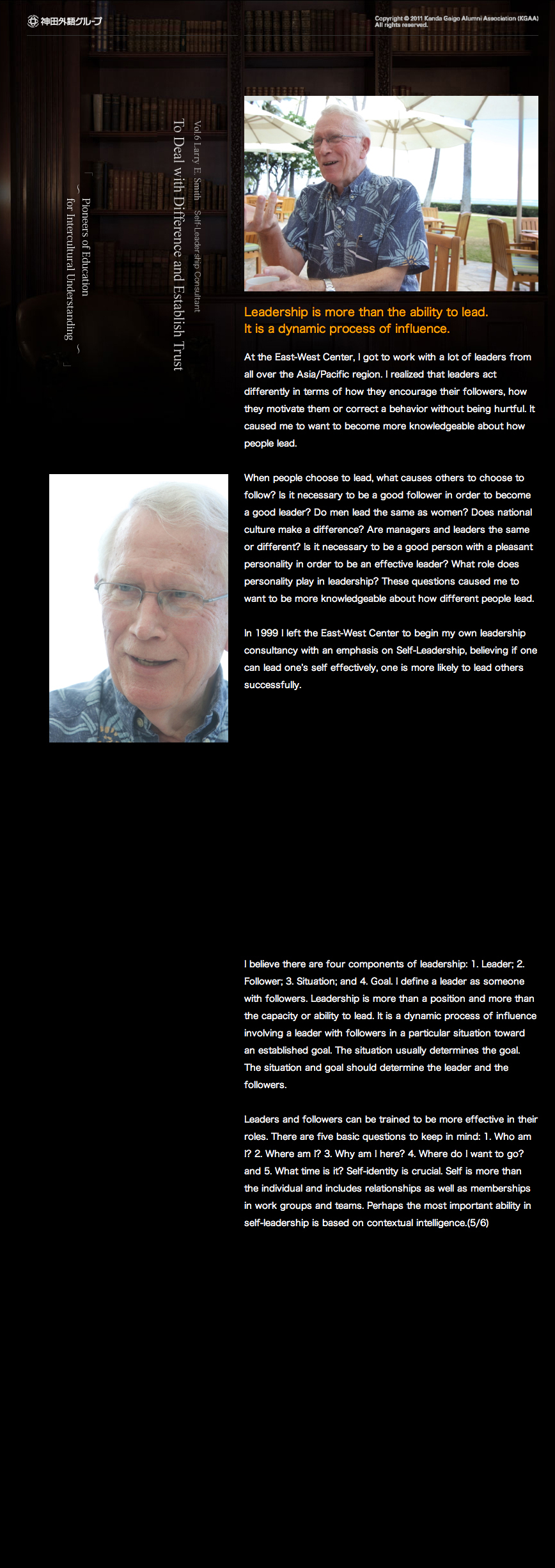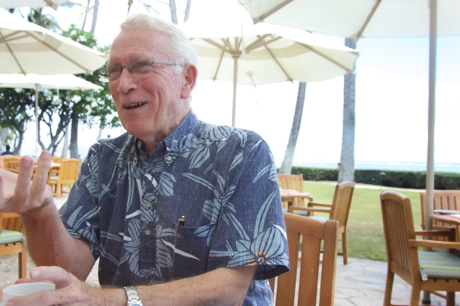

Copyright © 2011 Kanda Gaigo Alumni Association(KGAA). All rights reserved.

At the East-West Center, I got to work with a lot of leaders from all over the Asia/Pacific region. I realized that leaders act differently in terms of how they encourage their followers, how they motivate them or correct a behavior without being hurtful. It caused me to want to become more knowledgeable about how people lead.

When people choose to lead, what causes others to choose to follow? Is it necessary to be a good follower in order to become a good leader? Do men lead the same as women? Does national culture make a difference? Are managers and leaders the same or different? Is it necessary to be a good person with a pleasant personality in order to be an effective leader? What role does personality play in leadership? These questions caused me to want to be more knowledgeable about how different people lead.
In 1999 I left the East-West Center to begin my own leadership consultancy with an emphasis on Self-Leadership, believing if one can lead one’s self effectively, one is more likely to lead others successfully.
I believe there are four components of leadership: 1. Leader; 2. Follower; 3. Situation; and 4. Goal. I define a leader as someone with followers. Leadership is more than a position and more than the capacity or ability to lead. It is a dynamic process of influence involving a leader with followers in a particular situation toward an established goal. The situation usually determines the goal. The situation and goal should determine the leader and the followers.
Leaders and followers can be trained to be more effective in their roles. There are five basic questions to keep in mind: 1. Who am I? 2. Where am I? 3. Why am I here? 4. Where do I want to go? and 5. What time is it? Self-identity is crucial. Self is more than the individual and includes relationships as well as memberships in work groups and teams. Perhaps the most important ability in self-leadership is based on contextual intelligence.(5/6)